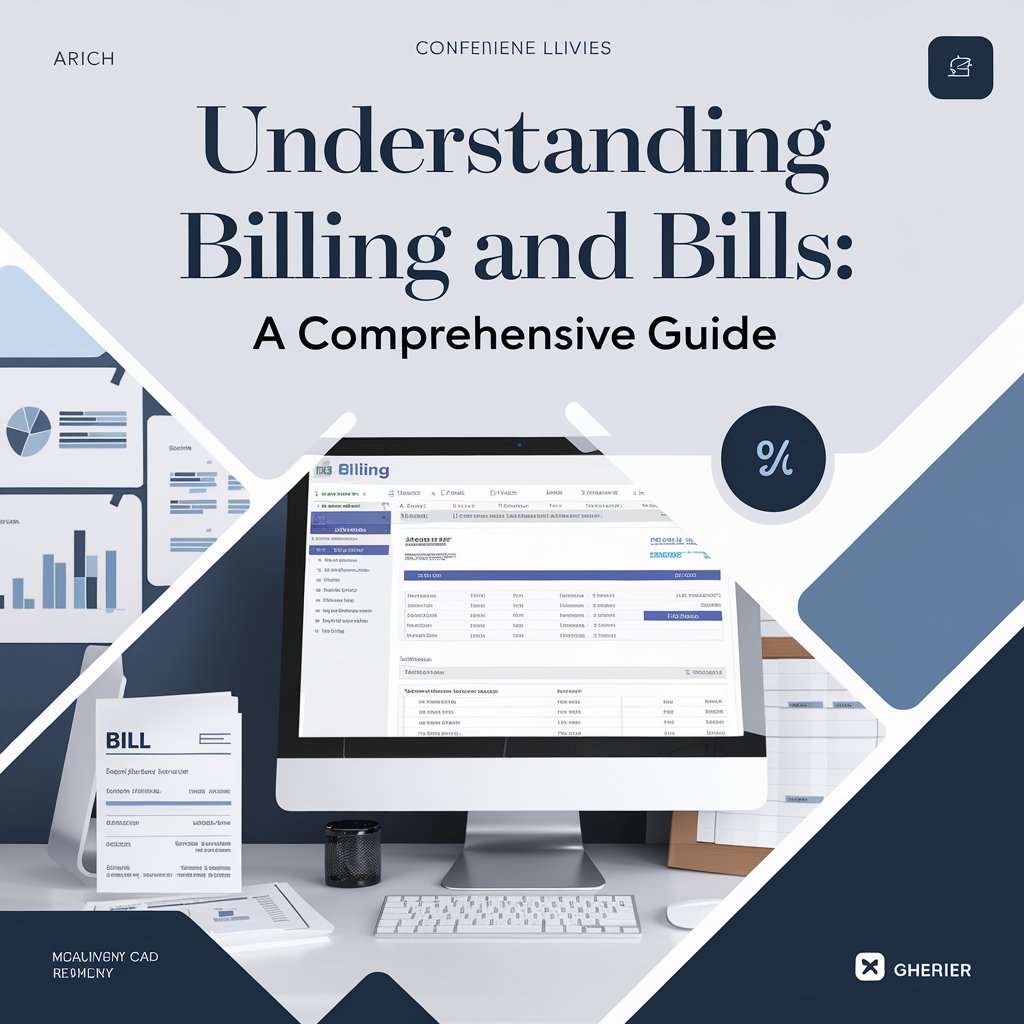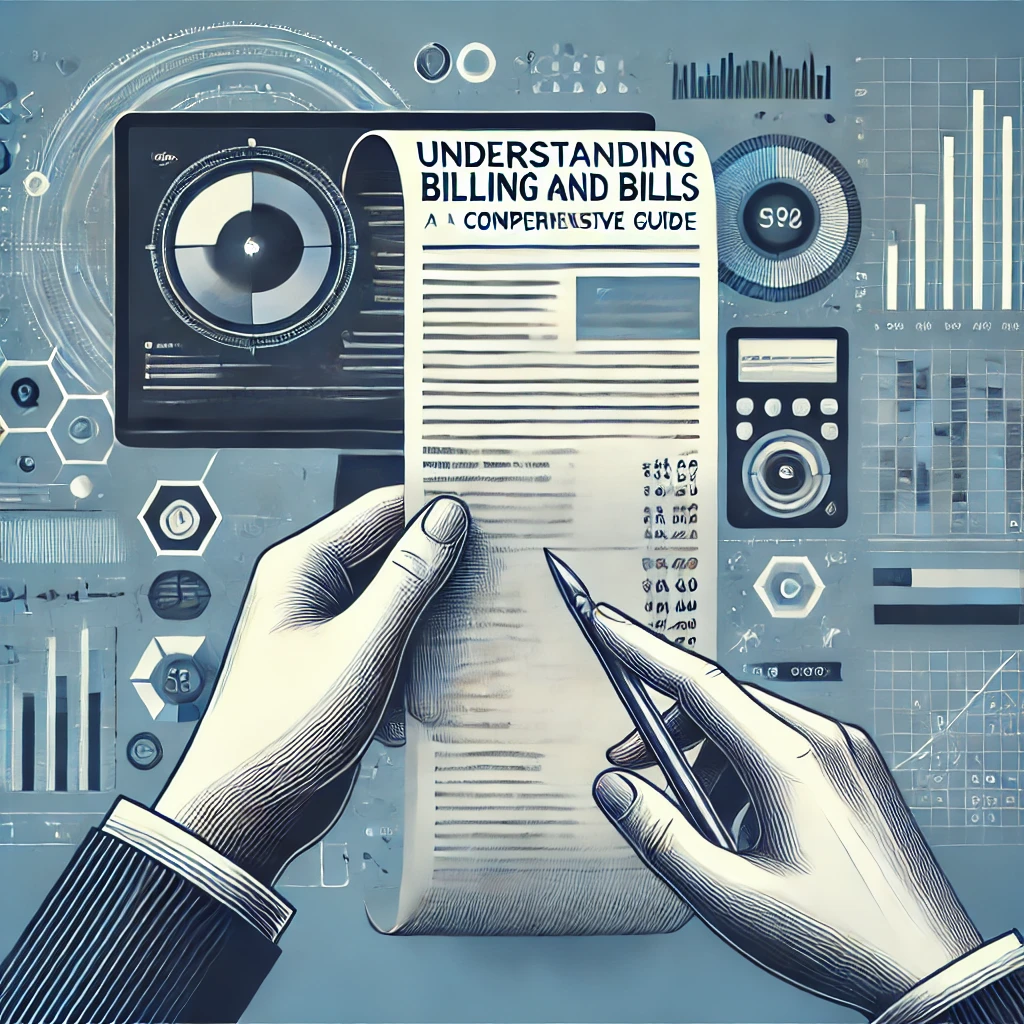Billing or Bill: Understanding the Essentials of Financial Transactions

What is Billing?
Billing refers to the process of preparing and sending a request for payment to a customer or client for goods or services provided. It’s an essential part of the accounts receivable process for businesses.
Key Aspects:
- Ongoing Process: Billing is a continuous activity for businesses that provide goods or services.
- Documentation: It involves creating and maintaining records of transactions.
- Communication: Billing includes informing customers about amounts due and payment terms.
- Financial Management: It’s crucial for cash flow and revenue tracking.
What is Billing?
A is a document that requests payment for goods or services provided. It’s the end product of the process.
Characteristics:
- Itemization: Often includes a detailed list of goods or services provided.
- Amount Due: Clearly states the total amount to be paid.
- Payment Terms: Specifies when and how payment should be made.
- Legal Document: Serves as a record of debt for both parties.
Billing or Bill: Understanding the Difference
While closely related, have distinct meanings:
- Billing is the process or system of preparing.
- A Bill is the actual document requesting payment.
Think of as the verb (action) and as the noun (object).
Invoice vs. Bill: Are They the Same?
One common source of confusion is the difference between an invoice. While these terms are often used interchangeably, there are subtle differences:
Invoice:
- Typically used in business-to-business (B2B) transactions.
- Often more detailed, including invoice number, payment terms, and tax information.
- Can serve as a legal document for tax purposes.
Bill:
- More commonly used in business-to-consumer (B2C) transactions.
- Generally simpler in format.
- Focuses on the amount due and payment deadline.
In practice, the distinction between invoices and is becoming less rigid, with many businesses using the terms interchangeably.
Types
Bills come in various forms, depending on the nature of the transaction:
- Utility: For services like electricity, water, or gas.
- Medical: For healthcare services rendered.
- Rent: For leasing property.
- Service: For professional services (e.g., legal, consulting).
- Itemized: Detailed breakdown of charges.
The Importance of Itemized
Itemized provides a detailed breakdown of charges, offering several benefits:
- Transparency: Customers can see exactly what they’re paying for.
- Dispute Resolution: Easier to identify and resolve discrepancies.
- Budgeting: Helps in analyzing expenses and planning future costs.
- Compliance: Often required for tax purposes or in regulated industries.
What Does an Itemized Look Like?
An itemized bill typically includes:
- Date of service or purchase
- Description of each item or service
- Quantity of each item
- Price per unit
- Subtotal for each line item
- Total amount due
- Any applicable taxes or discounts
The Process: From Service to Payment
Understanding the process helps in managing financial transactions effectively:
- Service Provision: Goods are delivered or services rendered.
- Creation: A detailed is prepared.
- Sending: The is sent to the customer.
- Payment Terms: Specify when payment is due (e.g., net 30).
- Payment Receipt: Customer pays.
- Payment Recording: Payment is recorded in the accounting system.
- Follow-up: If necessary, reminders are sent for unpaid .
Best Practices
Effective practices are crucial for maintaining healthy cash flow:
- Timeliness: Send bills promptly after services are rendered.
- Accuracy: Ensure all information is correct to avoid disputes.
- Clarity: Use clear, concise language.
- Consistency: Maintain a regular schedule.
- Multiple Payment Options: Offer various ways for customers to pay.
- Follow-up: Have a system for following up on unpaid.
- Documentation: Keep thorough records of all activities.
Common Challenges and Solutions
Businesses often face several challenges in the process:
- Late Payments
- Solution: Implement clear payment terms and follow-up procedures.
- Errors
- Solution: Double-check before sending and use automated systems to reduce errors.
- Disputed Charges
- Solution: Provide detailed, have a clear dispute resolution process.
- Cash Flow Issues
- Solution: Offer incentives for early payment and consider invoice factoring for large bills.
- Complex Structures
- Solution: Invest in robust software that can handle complex pricing models.

The Role of Technology
Modern technology has revolutionized the process:
- Automated Systems: Streamline the creation and sending.
- Electronic Invoicing: Allows for faster delivery and processing.
- Payment Gateways: Enable easy online payments.
- Cloud-Based Solutions: Provide access to information from anywhere.
- Data Analytics: Help in analyzing patterns and improving processes.
Legal Considerations
Billing practices are subject to various legal and regulatory requirements:
- Tax Compliance: Ensure include necessary tax information.
- Industry Regulations: Adhere to specific requirements in regulated industries (e.g., healthcare, legal services).
- Consumer Protection Laws: Be aware of laws governing practices, especially in B2C transactions.
- Data Protection: Safeguard customer information in records.
- Contract Law: Ensure aligns with contractual agreements.

Billing vs. Invoicing vs. Statements: Understanding the Differences
While often used interchangeably, these terms have distinct meanings:
Billing:
- The overall process of requesting payment.
- Can include both and invoices.
Invoicing:
- Specifically refers to creating and sending invoices.
- Often more detailed and used in B2B contexts.
Statements:
- Summaries of account activity over a period.
- May include multiple invoices or bills.
The Future of Billing
The billing landscape is continually evolving:
- AI and Machine Learning: Predictive analytics patterns and fraud detection.
- Blockchain Technology: Potential for more secure and transparent processes.
- Mobile: Increased use of mobile apps and payments.
- Subscription-Based Models: Growing trend towards recurring systems.
- Real-Time: Instant for services as they’re used.
Conclusion: Mastering Billing for Business Success
Understanding the nuances is crucial for effective financial management in both personal and business contexts. Whether you’re dealing with simple bills or complex invoicing systems, the principles remain the same: clarity, accuracy, and timeliness are key.
By mastering the process, businesses can:
- Improve cash flow management
- Enhance customer relationships through transparent practices
- Reduce errors and disputes
- Streamline financial operations
For individuals, understanding billing helps in:
- Better budget management
- Disputing incorrect charges effectively
- Maintaining good credit through timely payments
As we move towards an increasingly digital economy, staying informed about practices and leveraging technology can give businesses a competitive edge. Whether you’re a small business owner, a finance professional, or simply someone looking to better understand your personal finances, a solid grasp of concepts is an invaluable asset.
Remember, effective is not just about asking for payment – it’s about facilitating smooth, transparent financial transactions that benefit both the biller and the customer. By implementing best practices and staying abreast of technological advancements, you can turn your billing process from a necessary task into a strategic advantage for your business or personal financial management.
